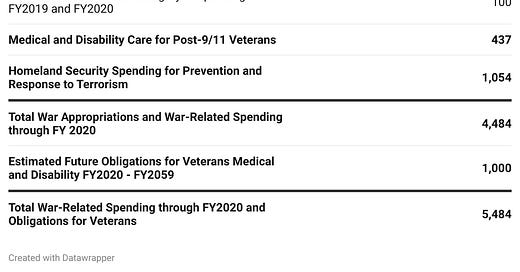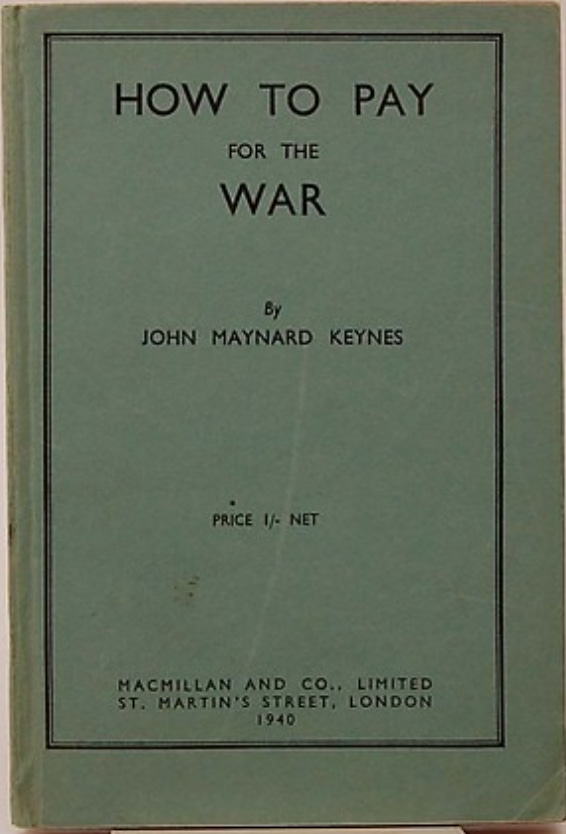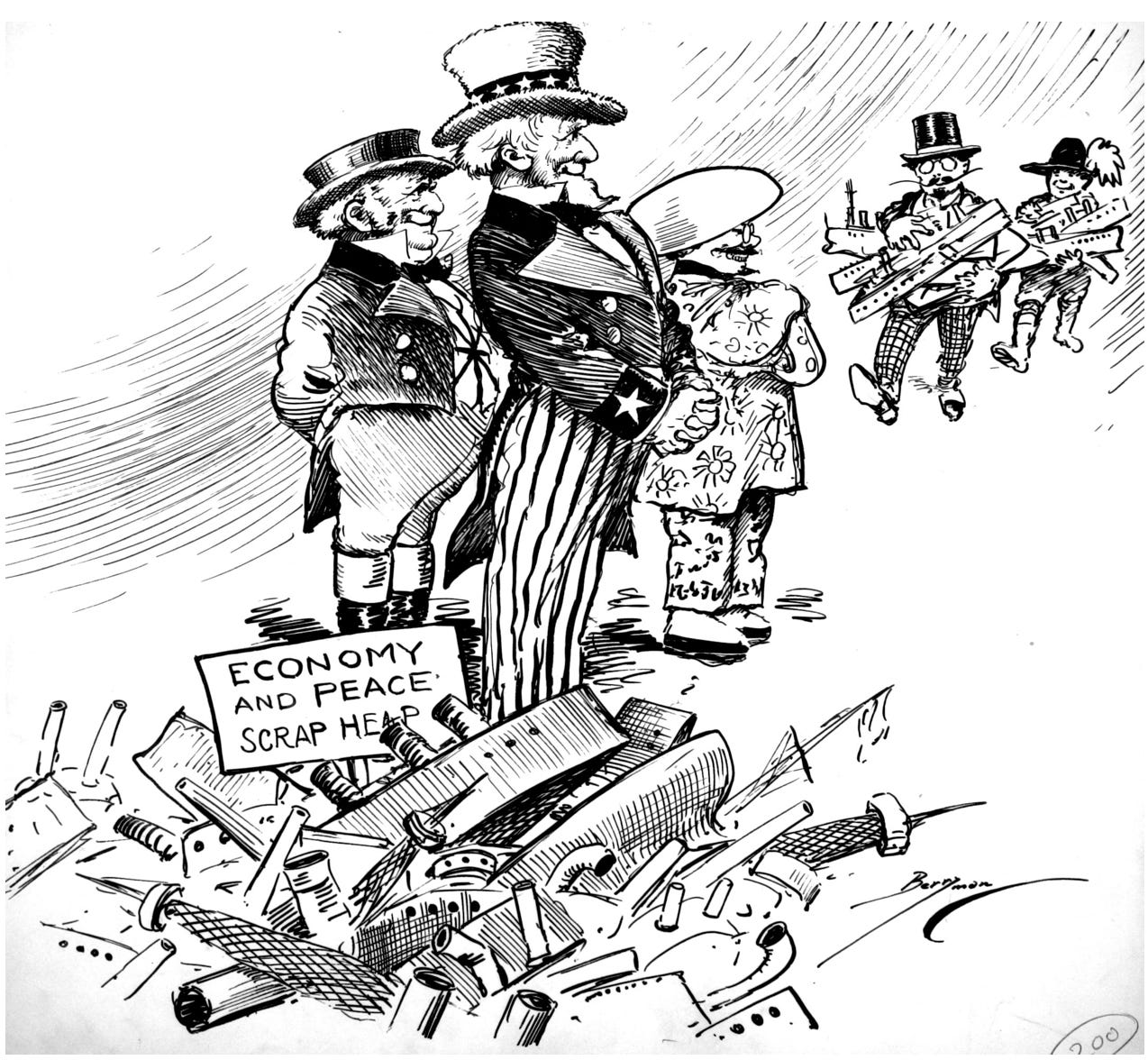Chartbook #34 How we paid for the War on Terror
Or, why Keynesianism and functional finance demand politics.
Adding up the money spent on the War on Terror in 2001 is a sobering exercise.
Summary of War Spending, in Billions of Current Dollars
(Rounded to the Nearest Billion)
FY2001-FY2020
Source: Costs of War, Watson Institute, Brown University
The Costs of War project based a Brown has done estimable work in digging through the horribly disfigured accounts of US government.
They followed in the footsteps of work like that by Joe Stiglitz and Linda Bilmes.
The response by progressive economists to the War on Terror would merit an intellectual history in its own right. Has anyone done this?
In compiling the accounts of the total volume of spending, plowing through the budgets of the DoD, State Department and Department of Veterans Affairs, these economists performed an extraordinary public service. And their work goes well beyond bean-counting. They have been tireless too in accounting for the human toll of the war.
Source: Costs of War, Watson Institute, Brown University
770-800,000 lives taken.
These data are only for direct casualties of fighting. They do not include loss of life due to disruption, disease or displacement. They do not account for injuries, or the trauma of mass displacement.
The data convey as well as anything, the sheer scale of the War on Terror. You cannot but marvel at the amount of money lavished on military interventions that have now ended in disgraceful shambles.
But returning to these studies in the summer of 2021, they trigger not only political flashbacks. After the great awakening of functional finance and Modern Monetary Theory in recent years, the encounter with the economic critique of the War on Terror also induces a sense of intellectual dysphoria. Much as one sympathizes with the critical project of accounting for the War on Terror, it is impossible to agree with the economics on which the critique is based.
Reading Stiglitz and Bilmes, who lay out the case most explicitly, one is hurled back into a conservative discourse of budgetary common sense. As far as the economics is concerned, their message is that the War on Terror was a crime against frugality and good housekeeping. The critique of wars “financed on credit cards” is straight out of the lexicon of the householder analogy - the common fallacy that confuses state budgets with those of a cash-constrained household that is struggling to get by on credit. When it comes to macroeconomic analysis, Stiglitz and Bilmes start, without hesitation, from the assumption of crowding out. Spending on the war displaces other public spending or private investment. This is the foundation of the conservative critique of “big government” for the last century or more.
Of course, no one would deny that in an economy operating at 100 percent full capacity - as in the kind of European war economy that Keynes analyzed in the 1940s - crowding out may occur. But that is a highly unusual state of affairs and is precisely not what a progressive analysis of capitalism should take for granted. There is no reason to believe that the US economy at any point in the last 20 years has operated close to that absolute limit, at which trade offs are zero sum. Labour force participation has trended down. Recent estimates by a Roosevelt Institute team of J.W. Mason, Mike Konczal and Lauren Melodia suggest that tens of millions of Americans could potentially join the labour force. Meanwhile, in capital markets, even in the face of an unprecedented volume of borrowing, interest rates have trended down, not up. The combination of monetary and fiscal policy has been a desperate effort to crowd private investment “in”, not “out”.
But, if in Stiglitz and Bilmes’s Three Trillion Dollar War you replaced mentions of Afghanistan and Iraq with references to a progressive program for infrastructure, climate or health spending, their manifesto could have been issued by a hit team of Republican fiscal hawk, back when the Republicans had fiscal hawks.
The gist would be something like this: “Gratuitous spending on public investment, raises debt, burdens future generations, pushes up interest rates and squeezes out other more productive investment, resulting in net GDP losses”. In other words, it would be precisely the kind of argument deployed against Biden’s infrastructure plan earlier this year.
What is happening here? Why do progressive critiques of the war fall back on conservative versions of economics to underpin an anti-war position?
***********
Before we answer that question, a quick note about Chartbook. I love putting this stuff together. I am delighted it goes out free to a wide readership. But it takes a lot of work. If you can afford to chip in to support the project, click one of the subscription buttons here:
************
To explain how an anti-war critique ends up relying on conservative economics, you could simply point to the residual neoclassical tendencies of new Keynesian economics. You could blame the Clintonian/Rubinite consensus of the 1990s. But there is also a more specific war-related political vector at work here.
It was not by accident, after all, that it was the “good war”, World War II that drove home the lesson of Keynesianism and functional finance. The total ideological commitment to the war had a solvent effect on Victorian economic orthodoxies. It took a “good war” to teach us the radical pragmatism of functional finance.
A mobilization we believed in enabled us to see that the state was not like a household. Taxes, bond issuance and “money printing” were not a moral hierarchy, but simply alternate ways of funding public spending with different implications for private balance sheets. The real limit on government spending was not some artificial debt ceiling, or the risk of “running out of money”, but the productive capacity of the economy and the risk of sparking either inflation, or a ruinous multiplication of bottlenecks and dysfunctional backlogs of unmet orders. As Keynes said, we can afford anything we can actually do.
Keynesianism was an ideology of mobilization, an intellectual project for winning the war. And there were Keynesians everywhere. German economists, aligned with the Nazi regime, made the same discoveries at the same time. They conducted extensive debates in 1943 and 1944 as to whether there was any upper limit to the debt that might constrain the final mobilization for Hitler’s Endsieg. It was dangerous to be a fiscal conservative in Hitler’s Germany, especially as the end approached. More on that another time.
Unfortunately, though the war had a solvent effect on fixed conservative ideas. The effect wore off. In the postwar period, the Keynesian revolution proved to be very incomplete. After all, adherence to its basic premises has quite dizzying implications - “run whatever deficit is necessary to ensure full employment at all times regardless of the debts you pile up” - which is why our friends in the MMT camp feel they have to be so zealous.
The kind of knee jerk “crowding out” argument offered by Stiglitz and Bilmes amply confirm MMT’s wariness of false friends.
But apart from the general tendency to fall back into neoclassical economics, it is surely more than coincidental that this kind of “crowding out”, “cost accounting” argument acquired new currency on the left precisely when it came to criticizing a bad war. If a “good war” gives you functional finance. When you oppose a “bad war”, it is convenient to anathematize that spending in common sense terms as uneconomic.
That same pattern was visible after the ultimate “bad war”, World War I. As I argued in Deluge, understanding the link between austerity and anti-war sentiment helps to explain one of the riddles of the interwar period.
Economy and Peace: A Scrap Heap For Dreadnoughts (Britain, the United States and Japan preside over naval disarmament November 1921 Washington conference)
Why did left-wing parties, such as the British Labour party, cleave to the conservative financial and monetary orthodoxies of the 1920s all the way through to the nadir of the Great Depression in 1931, even though this disabled their progressive social and economic policies and led to disaster? An important part of the answer is that progressive liberals and social democrats saw in the gold standard and tight budgets a guard against militarism. The really big spenders, up to that point in history, were war-mongers not socialists. Support for disarmament and peace went hand in hand with austerity.
As that example illustrates, it may be tempting to underpin progressive politics with common sense kitchen sink economics, but it is also risky. Not only will your economic analysis become muddled. Even more dangerous is the possibility that by advocating austerity in a good cause, you leave the power of expansive economics to the bad guys.
In the 1930s, the alignment of austerity with disarmament opened up on the right-wing the possibility of pairing rearmament with an expansionary economic policy. That was the formula in Imperial Japan and Nazi Germany. We have seen our own mini version of that played out in the USA in the 2010s when the conservative fiscal instincts of the Obama administration hobbled its response to the Lehman crisis, helping to open the door to Trump, who didn’t give a damn for fiscal orthodoxy.
If there was ever a President who took naturally to the power conferred by fiat money it was Donald Trump. So long as his name was on the checks, more was better. One of the reasons, it is said, that Jay Powell at the Fed refused to publicly admit that his buying of government debt was underwriting fiscal deficits, is that he feared, one day, that he would be asked to finance Trump’s Wall.
Keynes was clear-eyed enough to recognize that there was nothing in his theorizing that stood in the way of appropriation by the right-wing. This the point made in the unfortunate preface to the German edition of Keynes’s famous General Theory that appeared in the Third Reich in 1936 (the first foreign translation of his work).
There is some scholarly controversy about the origin of the text. Keynes himself was an anti-fascist. But it was also undeniable that an activist, militarist dictatorship, operating a closed economy was well placed to implement Keynes’s macroeconomics to the full.
Short-period macroeconomics of a Keynesian type, which pays no immediate attention to long-run growth, can be relatively indifferent with regard to what it is that the flows of consumption, investment and government expenditure are spent on, so long as they set the circular flow in motion.
This, of course, does not excuse us from making judgements about what we spend money on. It just means that economics cannot decide for you. It is an inescapably and appropriately political question.
When Stephanie Kelton says that freeing fiscal policy from the deficit myth makes budgetary decision more not less significant, she is absolutely right. When you don’t have artificial and imaginary budgetary constraints to limit debate, when you admit that, as Keynes says, we can afford anything we can actually do, then the question of what we actually do can no longer be handed off to accountants. There are no longer any excuses.
To fully embrace this creed as a progressive, emancipatory project, you must, therefore, at some level be optimistic about the likely outcome of the political struggle, if not in the short-run then in the long-run. It is admittedly a high risk strategy.
Modern macroeconomics is a formula for expanding and guiding agency. It can go hand in hand with progressive politics in all its forms. But it can also partner with other explosive forces of modernity, like war-making. By the same token, anti-war politics is the rejection of a certain kind of activism. It can, for that reason, shade into anti-modernism and conservatism. The same is true of deep ecology. Neither of these associations is inevitable or a logical necessity. But they are possibilities.
A progressive politics that wants to consistently resist such affinities, such alliance of convenience with conservatism, has to get truly comfortable with agency and the choices that implies. It has to get comfortable with politics so as to mount arguments against war, or environmental destruction on consistently non-conservative grounds. It has to be consistently constructivist.
Not surprisingly, the 1930s gave a huge fillip to conservatism, as the 1970s would do. Fear of politics is one of the reasons that conservatives of a neoliberal disposition are fundamentally skeptical about the emancipation offered by Keynesianism. Do we really want to face the full force of the budgetary question - who, whom? - without the mediation of a budget constraint? Can we really handle that much truth and that much freedom? Would it not be wiser to accept constraints, however artificial?
This, as I argue in Shutdown (out in September), is the sting in the tail of the Keynesian aphorism. Is 2020 taught, if we can afford anything we can actually do, then that makes the questions of what we actually try to do and how we try to do it and whether we can succeed, very pressing and very contentious. The accountants no longer provide us with any excuse.
Anyway, back to the War on Terror.
If we want to criticize the War on Terror from a perspective that does not betray sensible macroeconomics, we should not rely on calculations of cost, or suggestions of crowding out to do the work for us. America could easily afford the War on Terror. It wasn’t pouring money into the sand. Most of the dollars flowed back to America. But that doesn’t make the wars a good idea. The problem is not that we could not afford the wars, or that we paid for them on credit card. The problem is that the powers available to a monetary sovereign were used to pursue such a misguided and destructive project.
If you insist on making the argument against war-fighting on economic grounds then point to real disequilibria that it triggered. Inflationary pressure for instance. Or overheating. But the fact is that the War on Terror would have needed to be far larger than it was to have significantly impacted the macroeconomic balance. The War on Terror would have needed to been more like the 1950s Korean war, to push the US towards the point at which crowding out might have become relevant.
You might talk about the impact of military spending in tracking R&D towards destructive purposes. In 2021 the Pentagon has its own critique on those grounds. The military now regard the focus on counterinsurgency in Iraq and Afghanistan as a distraction from peer competition with China.
Criticize the war profiteering, the privatization of military services and investigate their impact on social and economic inequality. A problem here may be that the US military is widely reputed to be one of most successful multi-racial institutions in the US.
Talk about the impact of a surge of military spending on political economy i.e. on the struggle for power: who has the right to make decisions and where they are made?
Talk, seriously, about the role that concerns for global oil supplies and control over them may, or may not have played in launching the wars in the first place.
All these are real problems. None of them involve you in the householder fallacy or talking about “crowding out”. But for good measure let us take one last look at the version of the “crowding out” argument that is hardest to resist.
Given the sums involved - $5.484 trillion - how can we not criticize this spending? There are so many other things that “the money” could have been spent on. That is, of course, true in the sense that it would have been lovely to spend $5.484 trillion on social and racial justice, American families, or the energy transition. The fallacy lies in founding this argument on the idea of a discrete pot, “the” money that we foolishly allocated to futile wars, rather than sensible societal investment.
There is no such pot. There is a productive apparatus and resources that feed it - what we are gesturing towards when we talk about “the economy”. They can be mobilized using flows of spending generated by public or private credit, to move in one direction or another. Those resources and that machinery can be stretched. Or not. For most of the last twenty years they have been chronically underutilized.
The constraints here are politics and political economy in the widest sense on one side, and real economic resources on the other. There is no pot of money in between that defines limits or possibilities. We should by all means spend time thinking about what it would be good to spend $ 5 trillion on, but given the available resources and the amount of slack at our disposal that is a case to be made independent of the spending on the war.
The tragedy is not that the War on Terror crowded out better projects. The tragedy is that the better projects were never on the agenda of power at all. The tragedy is that the one thing that those with power and influence could agree on was war-fighting. In a profoundly divided polity, with deep divisions extending into the elite itself, national security is the one area where a degree of bipartisan agreement was still possible.
Other than making good the damage done by the frailty of the financial system, the War on Terror was by far and away the largest collective undertaking of the United States elite in the last twenty years. That is what the numbers so carefully compiled by the left critics of the war show. It is indictment enough.










